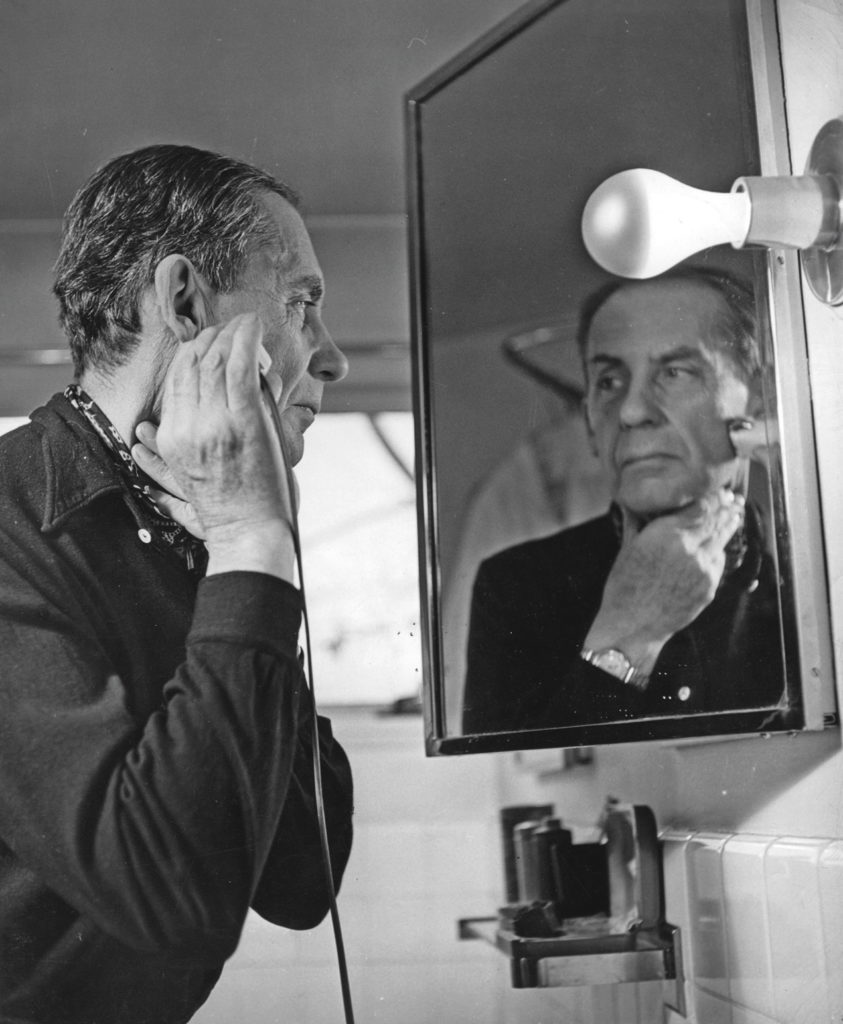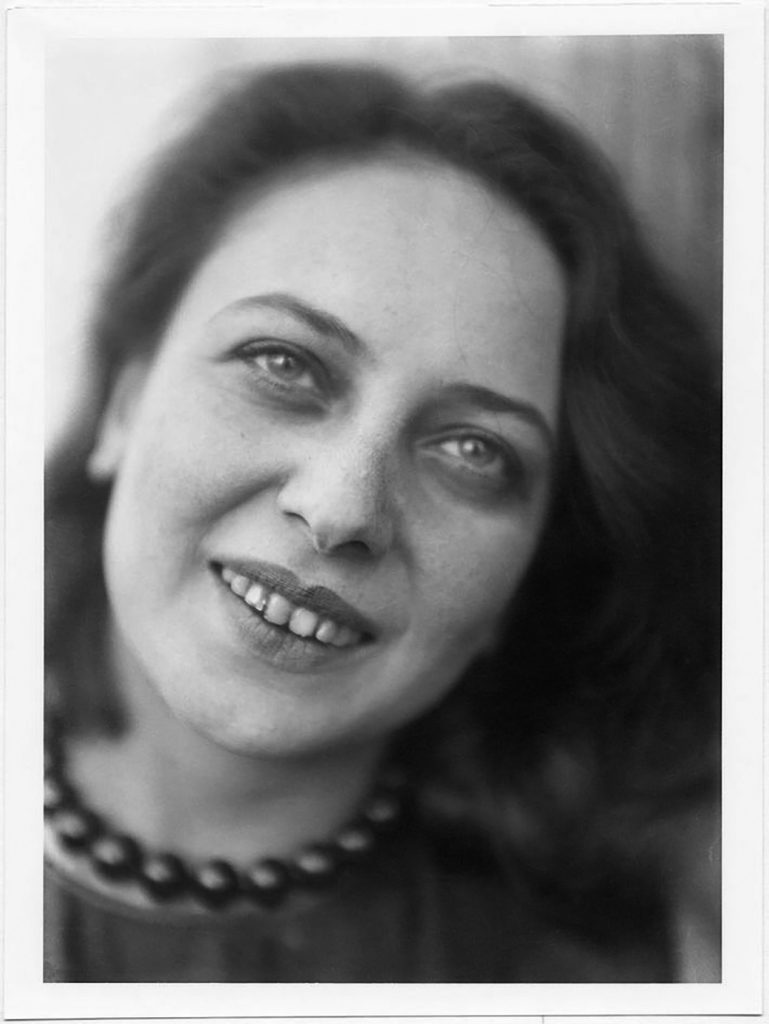Design of the times
From buildings to furniture to modern-day album covers, the influence of the Bauhaus movement, now in its centenary year, is everywhere
The closest the north of England came to getting its own Bauhaus building was in 1934, when Walter Gropius, founder of the radical German arts and architecture school, considered a site on the banks of the River Mersey where it winds past Didsbury in south Manchester. If the funds had been forthcoming, this could have become a gleaming Modernist apartment block along the lines of the famous Isokon building in Hamsptead, London, built the same year.
Many of the Bauhauslers were Jewish, and left Germany for Britain and the US
British supporters had helped Gropius secure the Manchester commission, and another in Birmingham, as a way to circumvent the Nazis’ strict travel laws. In the event, although Gropius stayed on in London, living at Isokon, both commissions fell through. The only original Bauhaus design to reach the north was a temporary show flat designed by him in 1937 for the Manchester department store Kendal Milne, just before he left for the US to develop his private practice and become head of architecture at Harvard.
Isokon was the natural home for Gropius and his wife Ise when they arrived in London, and they lived there alongside other refugees from Nazi Germany, including Marcel Breuer, László Moholy-Nagy and Herbert Bayer, designer of the distinctive lower-case Bauhaus lettering. It’s thought that up to 30 Bauhaus staff and students perished in Nazi concentration camps.
Also known as the Lawn Road Flats, the Isokon building was based on communal dining and social living. The fascinating story of Isokon and its left-leaning, arty residents, including Liverpool-born writer Nicholas Monsarrat, is told in a new book,
Isokon and the Bauhaus in Britain, by Leyla Daybelge and Magnus Englund.
The Bauhaus school had three incarnations in three German cities – Weimar, Dessau and Berlin – and exactly spanned the years of the Weimar Republic, 1919 to 1933, after which Nazi oppression and suspicion made it impossible for it to continue. Many of the Bauhauslers were Jewish so doubly at risk, and left Germany for Britain and the US, where Bauhaus’s Modernist aesthetic spread and evolved, mainly in architecture, furniture and interior design.
Bauhaus is a familiar word today and associated with anything seemingly influenced by the school’s aesthetic, from the clean lines and sparkling white Snowcrete cubist architecture to the colours of books or album covers, such as the distinctive sans serif typography and edgy iconography of bands like Kraftwerk, Joy Division and Franz Ferdinand.
A hundred years ago it was a newly coined term meaning “building house”, a verb and a noun that emphasises the double principles of being and doing. Bauhaus was not only a style but also, and perhaps more importantly, an inter-disciplinary teaching method that embraced industry, art and technology.
Cultural commentators still debate how far-reaching its influence was, and how much it has been debased to a brand, but there are strands of architecture, art, sculpture, furniture and interior design, photography, graphic design, textiles, ceramics, advertising, typography and many other applied arts that can be traced back to the short-lived school.

In his new book, Bauhaus Goes West, Modern Art and Design in Britain and America, architectural historian and writer Alan Powers unpicks the complexities and cross-currents of the transmission and reception of Bauhaus ideas in Britain, both during its existence and after its end.
“Often it is quite difficult to separate literal Bauhaus influence from a more general Modernist set of ideas and principles,” he says. “The two concepts have become merged in popular understanding, and it is probably too late to separate them. The Bauhaus school lasted for 14 years and was part of a lively period in Germany and Europe in which different schools and organisations developed an approach to combining art and design practices.
“Generally, the Bauhaus is taken to signify a visually austere and abstract set of forms, with attention to making techniques, in which we can see its own origins in the English Arts and Crafts movement.”
Bauhaus principles were harnessed in Breuer’s tubular steel Wassily chair, named after his tutor Wassily Kandinsky, the design and colour theories of Paul Klee, (both Bauhaus tutors), the inventiveness of Moholy-Nagy, who designed the distinctive typefaces, and the architectural simplicity of Gropius himself.
“Bauhaus or ‘building house’, was also associated in Germany with building character.”
Although few people in Britain had heard of Bauhaus before the 1930s, the north played its part in promoting its ethos. The schools of architecture at both Liverpool and Leeds universities were quick to embrace Modernism. As early as 1912, Michael Sadler, vice chancellor of Leeds University, visited the painter Kandinsky, who later taught at the Bauhaus.
The Yorkshire-born art critic Herbert Read was perhaps the most well-known advocate of Bauhaus. In 1934 he commissioned Bayer to design the cover for his influential book Art and Industry. Leonard Elmhirst, another progressive Yorkshireman, welcomed Gropius and his wife to Dartington Hall, which he had opened with his wife in 1925, and where they were applying Bauhaus-style integrated teaching.
The pioneering science correspondent JG Crowther, from Halifax, interviewed Gropius for the Manchester Guardian in 1930 and had also met Moholy-Nagy in Germany and commissioned him to design the cover for his 1930 book An Outline of the Universe.
By the late 1940s and 1950s, Modernist ideas were taking hold in architectural sectors, notably housing and education, and particularly in university buildings.
“There are clearly both direct and diffuse influences at work,” continues Powers. “One post-war example can be seen at the University of Sheffield where the Library and Arts Tower by Gollins Melvin Ward is influenced by Mies van der Rohe, who, it’s sometimes forgotten, was the third and final director of the Bauhaus, before he too left for America in 1937.”
A notable aspect of Bauhaus transmission was the art teaching at Leeds College of Art and Newcastle University in the 1950s and 1960s by artists including Richard Hamilton, Victor Pasmore and Kenneth Rowntree. “This was called Basic Design,” says Powers. “And like the Vorkurs, or Preliminary Course, at the Bauhaus, it aimed to strip away the student’s preconceptions about form and style and to build them up again with exercises in the manipulation of shapes and materials.”
One outcome was Peterlee New Town in County Durham. “Pasmore was engaged to work with the architects and make the housing into a sort of visual composition of shape and colour that would come to life as you drove along the roads,” he says. “The concrete Apollo Pavilion, part sculpture, part bridge, was built but the overall scheme wasn’t fully realised and can’t be said to have been a great success, and indeed I think it rather killed off the potential of this idea.”
The careers of the three Bauhaus tutors did not blossom in conservative England, although Gropius set up an architecture practice with the Wirral-born artist Maxwell Fry and together they designed a new type of system-built school at Impington in Cambridgeshire.
Some British architects remained fascinated by the Bauhaus long after its main proponents had left. The Modernist house designs of Peter Stead, an artist-craftsman-builder in 1950s Huddersfield, could be described as in some ways Bauhaus. Stead also worked with architect Peter Womersley on the construction of Womersley’s first house, still standing at nearby Farnley Hey, and then built three houses at Almondbury on his own, two in steel and one in timber for himself.
Sadie Speight, in architectural practice with her husband Sir Leslie Martin (designer of the Festival Hall on London’s South Bank and head of the architecture school at Hull University from 1934) – both from Lancashire – designed a kindergarten in Cheshire, one of the first modular school buildings along Bauhaus lines, but she was also an influential product designer whose way of combining craft with modern technology and materials chimed with the Bauhaus ethos.
Maxwell Fry, in partnership with his wife Jane Drew, went on to design Pilkington’s headquarters and social housing in St Helens, and also Kingston House in Hull, which could all be said to have distilled some Bauhaus elements.
“The biggest influence was perhaps on art education in the post-war era,” says Judith Winter, a writer, curator and senior lecturer at Manchester School of Art. Winter has been a guest researcher with the Bauhaus Dessau Foundation since 2016 and co-curated the 2007 exhibition Bauhaus 1919-1933 at Middlesbrough Institute of Modern Art. “One might say that any art student who studied on a traditional foundation course has experienced a Bauhaus education.
“It’s important to remember that Bauhaus was not some privileged place that separated art from everyday life. Gropius set it up to answer the inertia of academia and Bauhaus was first and foremost a school focused on social transformation in a newly-forming modern world after the devastation and trauma of the First World War. It was about making or crafting the modern age.
“Bauhaus or ‘building house’, was also associated in Germany with building character. Skills and technique could be taught, but there was also a need for young people to move their understanding beyond simple apprenticeship or vocation.
“So in the 21st century the biggest lesson we can learn is perhaps that this experiment in art education was about training the visual and haptic–- an understanding of touch by working with materials – and imaginative citizenship. Bauhaus’s influence and educational approach has spread throughout the world, but it is in danger of being entirely lost in our present systems.”
What would Bauhaus be today? This is the question that Teesside-based artist Adam Clarke asked himself. “It’s not about what you make – it’s how you make it,” he says. “Andy Warhol wouldn’t be doing screen printing – he’d be doing something with new technologies – and in the same way you can make the idea of Bauhaus accessible to everybody.”
Clarke has set up New Boosbeck Industries, a furniture-making social enterprise and reincarnation of a scheme started in 1930 to help unemployed ironstone miners in the village of Boosbeck in East Cleveland. The link with Bauhaus is that Wilfred Franks, a London designer who had studied there, came to Boosbeck with the composer Michael Tippett, where they took part in community opera productions as well as making furniture.
In the same spirit, Clarke works with unemployed steel workers, community groups such as Men in Sheds, refugees and long-term unemployed young people.
“One of the downfalls of Bauhaus was that it never got into mass production,” says Clarke. “We are continuing a linear line from Ruskin and the Arts and Crafts movement, through Bauhaus and on to New Boosbeck Industries.
“It’s a way of embracing new technologies that keep traditional crafts alive, but not in an elitist way. The Bauhaus was ultimately limited, because its items became elitist art pieces.”
Gropius, whose life is traced in a new biography, Walter Gropius: Visionary Founder of the Bauhaus by Fiona MacCarthy, set sail for the US in March 1937. Breuer and Moholy-Nagy both gave talks in Manchester and at Hull School of Architecture before they, too, left for the US later the same year. They all had successful careers on the more fertile and receptive ground across the Atlantic.
In the ensuing decades Bauhaus and the original Bauhausler took many pathways, without, says Powers, a “simple narrative”. Bauhaus, he suggests, “is best understood as a patchwork of personalities, institutions and events, in which product design, more than architecture, played the leading role”.
So while it’s hard to imagine contemporary interiors, for example, without the simple, stylish inventions of Bauhaus – the tubular chair, the looped plywood coffee table, the goose-necked table lamp, the floating shelf, the fitted kitchen – in many ways its spirit remains as elusive as a Didsbury Gropius.
Deborah Mulhearn on Bauhaus women

Otti Berger (pictured above) went to study at the Bauhaus from her village in what is now Croatia. Berger was a gifted and skilled weaver and textile designer who was also almost completely deaf, and so had developed a remarkable sensitivity to touch.
She took over the running of the weaving workshop when its head, Gunta Stölzl, left to have a baby, only to find herself displaced when the new director, Mies van der Rohe, did not renew her contract and installed his lover Lilly Reich over her, despite her lack of experience.
Berger left and set up her own business, patenting her designs and building an impressive body of artistic work of furnishing fabrics and interior design.
Berger was Jewish and was subsequently banned from the professional register under the Third Reich’s purge. She left for England in 1937 and moved to Manchester with the promise of work in the textile industry. But the only paid work she found was at Helios, a fabric manufacturer in Bolton.
Much of what she did was unpaid. Depressed and lonely, and while waiting for the visa that would allow her to travel to the US to join her Bauhaus fiance in the US, Berger took a last trip back to Croatia to see her mother. She was still there in 1941,
but nothing was heard of her after this until Russian records made public in 2005 revealed that she had died at Auschwitz in 1944.
Her story and those of 44 other Bauhaus-trained women, covering a diverse range of artistic and creative achievements including weaving, pottery, painting, photography, architecture, jewellery, baking, children’s furniture and toy design, are told in Bauhaus Women: A Global Perspective by Elizabeth Otto and Patrick Rössler, also published this year to mark the centenary.
Although women at the Bauhaus often outnumbered men threefold, they were mostly channelled into these “softer” disciplines, and many of them struggled for recognition. In 1972 Manchester-born sisters Susan Collier and Sarah Campbell reignited the interest in Bauhaus with their vibrant, geometric design (also called Bauhaus) for Liberty, based on the designs of Gunta Stölzl, Berger’s weaving “master”.
Naomi Wood on Bauhaus love
Creative utopias can be sexy places. The Bauhaus in Dessau was described as a “city of glass”, where the craftsmen and artists could constantly see and be seen. When I went to a Bauhaus exhibition at the Barbican in London in 2012, I thought about what a great setting it would make for a novel, with the potential for so much bed-hopping between the Bauhaus’s balconied bedrooms.
In novels, affairs must go wrong: friendships turn sour, sex can be poisonous, and romance can be betrayed. But during the research for The Hiding Game, I was also fascinated by the real-life Bauhaus relationships that lasted – and even turned into marriage. Bauhaus productivity was predicated on strong relationships between the students, nurtured by the carefully designed buildings but also by its costume parties and festivals.
Walter Gropius, the founder of the Bauhaus, fell into a passionate relationship with
Ise Frank after a disastrous love affair with Alma Mahler. Ise quickly cancelled her wedding to someone else. Sometime photographer, architect and designer, it was also down to Ise’s fervent fundraising efforts and organisational skills that the school survived as long as it did – so much so that she was nicknamed Mrs Bauhaus.
Josef and Anni Albers enjoyed a Bauhaus marriage that spanned the twentieth century, as well as two continents. They couldn’t have been more different: she was from a wealthy Jewish family who owned a newspaper empire; Josef was Roman Catholic, from a family of craftsmen. From their marriage in 1925 (he was a professor, she a student) they formed a supportive relationship that resulted in a mutually prolific output. In Anni’s geometric weaves and Josef’s painted squares one can see the influence of the other. This was Bauhaus love at its best.
Bauhaus students Gertrud Hantschk and Alfred Arndt married in 1928. They were an ironic, humorous duo: writing and illustrating perhaps the world’s first funny prenup agreement, which obliged them to keep trim, holiday abroad, and to protest for equality for men and women. This last principle was the couple’s biggest snag: equality didn’t transpire in practice for Gertrud. Instead, she buried her artistic dreams and took photos of her architect-husband’s buildings.
Out of sheer boredom, alone as a frustrated housewife, Gertrud took her (now celebrated) series of playfully expressive self-portraits: the Masked Portraits. After her work was rediscovered in the 1980s, it is now Gertrud, rather than Alfred, who is remembered as an iconic Bauhaus artist.
